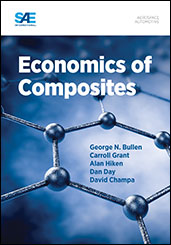Book

Economics of Composites
2015-09-17
This essential information captures the state of the composites industry to assist engineering/technical professionals in charting a course for achieving economic success. The material characteristics of composites, their applications, and complex composites manufacturing processes depend on many factors. These are all fully considered and presented to meet the challenges that face this marketplace.
